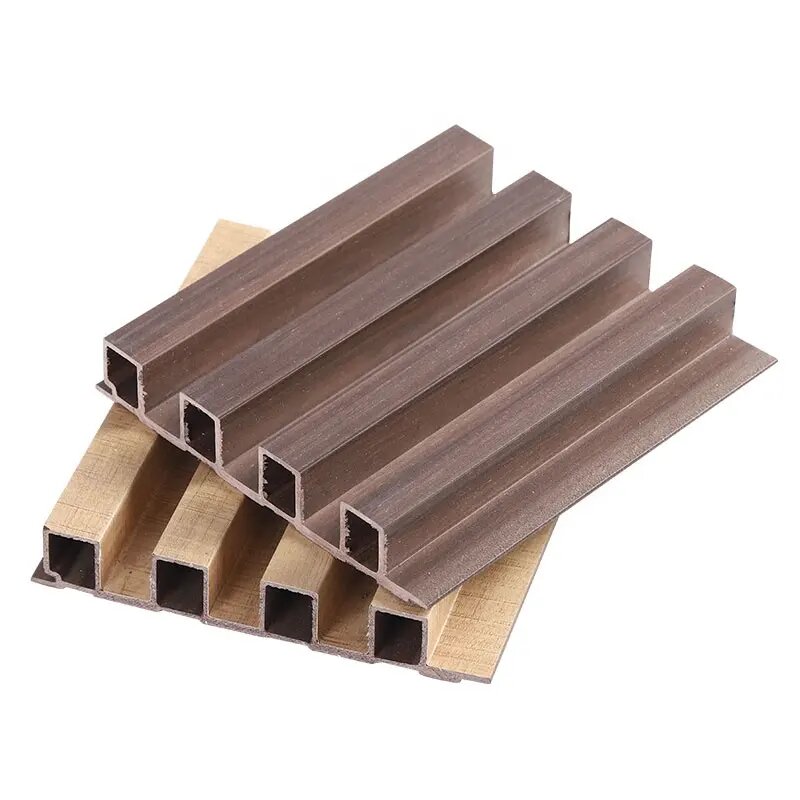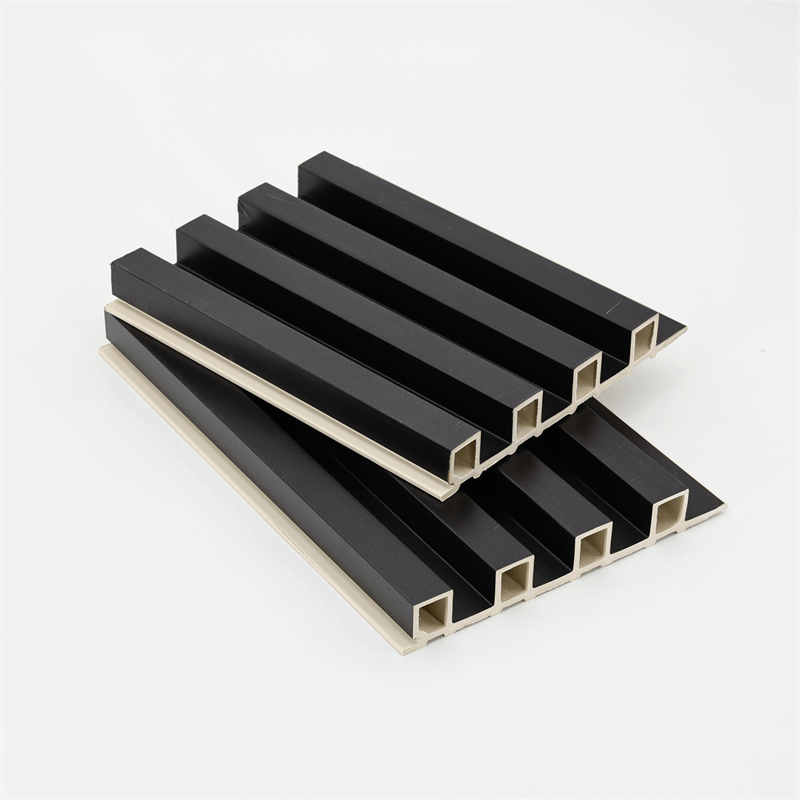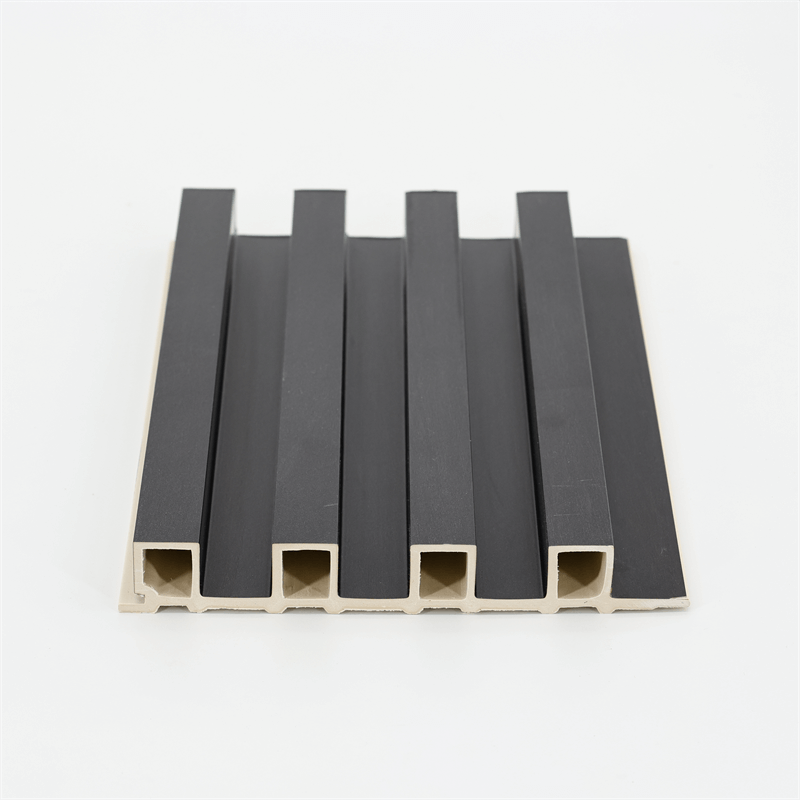In recent years, the architectural and design industries have witnessed a growing demand for sustainable materials and practices.
As the world becomes more environmentally conscious, the need for innovative solutions that balance aesthetics, functionality, and sustainability has become paramount.
One such solution that has gained significant popularity is WPC (Wood-Plastic Composite) wall panels.
This essay explores the rise of WPC wall panels as a sustainable solution for modern architecture, examining their benefits, applications, design possibilities, and the role they play in shaping a more environmentally friendly built environment.
I. Understanding WPC Wall Panels:
WPC wall panels are a composite material made from a combination of wood fibers or flour and thermoplastics, such as polyvinyl chloride (PVC).
This blend of natural and synthetic materials results in a product that offers the best of both worlds – the aesthetics of wood and the durability and low maintenance of plastics.
WPC wall panels are engineered to mimic the appearance of wood, providing a warm and natural aesthetic while offering superior performance and sustainability features.
II. Advantages of WPC Wall Panels:
Sustainability and Environmental Benefits:
One of the primary advantages of WPC wall panels is their sustainability.
Unlike traditional wood panels, which require the harvesting of timber from forests, WPC panels utilize wood fibers sourced from sustainable forestry practices and recycled materials.
By reducing the demand for virgin wood and diverting waste from landfills, WPC wall panels contribute to the conservation of natural resources and the reduction of environmental impact.
Additionally, WPC wall panels are recyclable and can be repurposed at the end of their life cycle.
This characteristic aligns with the principles of the circular economy, where materials are kept in use for as long as possible, reducing waste and promoting a more sustainable approach to construction and design.
Durability and Low Maintenance:
WPC wall panels are engineered to be highly durable, resistant to rot, decay, and insect damage.
Unlike wood, they do not require regular sealing, staining, or painting to maintain their appearance and performance.
This low-maintenance characteristic not only reduces the need for harsh chemicals but also minimizes the time, effort, and cost associated with upkeep, making WPC wall panels an attractive choice for both residential and commercial applications.
Moisture and Weather Resistance:
Traditional wood panels are susceptible to moisture absorption, which can lead to warping, swelling, and decay.
In contrast, WPC wall panels are designed to be moisture-resistant, making them ideal for high-moisture environments such as bathrooms and kitchens.
They are also resistant to fading, cracking, and discoloration caused by exposure to sunlight and harsh weather conditions, ensuring their longevity and maintaining their aesthetic appeal over time.
Versatility in Design and Applications:
WPC wall panels offer a wide range of design possibilities, allowing architects and designers to create visually appealing and unique spaces.
These panels are available in various sizes, textures, and colors, providing flexibility in achieving desired aesthetics.
Whether aiming for a contemporary, rustic, or traditional look, WPC wall panels can be customized to suit different design styles and preferences.
Moreover, WPC panels can be easily installed, allowing for quick and efficient construction processes.
They can be applied to both interior and exterior walls, enhancing the overall visual appeal of residential, commercial, and institutional buildings.
III. Applications of WPC Wall Panels:
Residential Buildings:
WPC wall panels have gained popularity in residential construction due to their aesthetic appeal, durability, and sustainability.
They can be used in various areas of a home, including living rooms, bedrooms, kitchens, and bathrooms, creating a cohesive and visually appealing design.
WPC panels can also be utilized for exterior cladding, adding a touch of elegance and modernity to the facade of residential buildings.
Commercial and Public Spaces:
In commercial and public spaces, WPC wall panels offer a combination of functionality and aesthetics.
They can be applied in offices, retail stores, hotels, restaurants, and educational institutions, creating a welcoming and visually striking environment.
WPC panels provide acoustic insulation, improving the sound quality within spaces and creating a more comfortable atmosphere for occupants.
Green Building Projects:
WPC wall panels align with the principles of green building and sustainable design.
Their use contributes to obtaining green building certifications, such as LEED (Leadership in Energy and Environmental Design), which recognize sustainable construction practices.
By incorporating WPC panels into green building projects, architects and developers can meet sustainability goals while creating visually appealing and functional spaces.
IV. The Role of WPC Wall Panels in Shaping a Sustainable Future:
The rise of WPC wall panels signifies a shift towards sustainable and responsible architectural practices.
By choosing WPC panels over traditional wood or non-renewable materials, architects and designers are making a conscious decision to reduce environmental impact while maintaining design integrity.
The use of WPC panels promotes resource conservation, waste reduction, and the adoption of a circular economy approach in the construction industry.
Furthermore, the widespread adoption of WPC wall panels sends a powerful message to the industry and the public, highlighting the importance of sustainable materials and practices in shaping a greener future.
As the demand for sustainable architecture continues to grow, the role of WPC wall panels will become even more significant, pushing the boundaries of design possibilities and contributing to a more environmentally friendly built environment.

WPC wall panels have emerged as a sustainable solution for modern architecture, offering a range of advantages that encompass aesthetics, durability, and environmental responsibility.
Their ability to mimic the appearance of wood while providing superior performance, low maintenance, and moisture resistance makes them a preferred choice in both residential and commercial applications.
The versatility in design options, coupled with their contribution to resource conservation and waste reduction, positions WPC wall panels as a driving force in shaping a more sustainable and visually appealing built environment.
As architects, designers, and developers continue to prioritize sustainability, the rise of WPC wall panels will continue, leading the way towards a more sustainable future in modern architecture.
In conclusion, the rise of WPC wall panels marks a significant shift towards sustainable practices in modern architecture.
These panels offer a compelling solution that balances aesthetics, functionality, and environmental responsibility.
With their sustainable sourcing of materials, durability, low maintenance, and resistance to moisture and weather conditions, WPC wall panels are becoming increasingly popular in residential and commercial applications.
The versatility of WPC wall panels allows architects and designers to explore a wide range of design possibilities, enabling the creation of visually appealing and unique spaces.
From contemporary to traditional styles, these panels can be customized to suit different design preferences, enhancing the overall aesthetics of buildings.
Moreover, the adoption of WPC wall panels contributes to resource conservation, waste reduction, and the promotion of a circular economy.
By utilizing recycled materials and reducing reliance on traditional wood, these panels help mitigate environmental impact and support sustainable construction practices.
As the demand for sustainable architecture continues to grow, the role of WPC wall panels becomes even more significant.
Their use in residential, commercial, and public spaces sends a powerful message about the importance of responsible and environmentally friendly design.
By choosing WPC panels, architects and designers are making a conscious decision to prioritize sustainability and contribute to a greener future.
In the years to come, the advancements in WPC technology and design will likely further enhance the versatility and performance of these panels.
As they become more widely adopted and accepted, the cost-effectiveness and availability of WPC wall panels are expected to improve, making them even more accessible to architects, designers, and builders.
In conclusion, WPC wall panels are a sustainable solution that embodies the principles of modern architecture.
With their blend of aesthetics, durability, and environmental responsibility, these panels are paving the way for a more sustainable and visually appealing built environment.
As we continue to prioritize sustainability in the construction industry, the promise of WPC wall panels remains strong, contributing to a greener future for generations to come.


